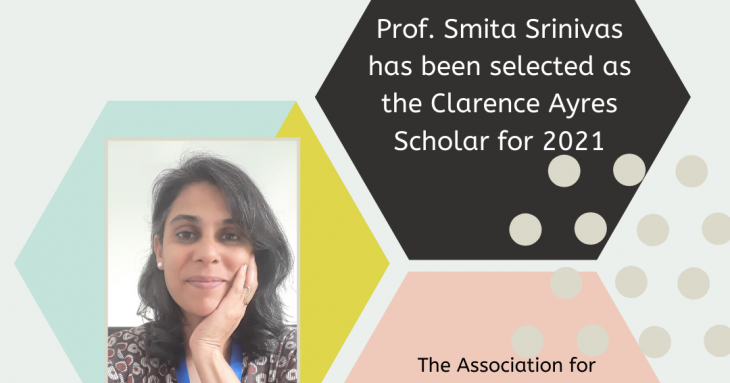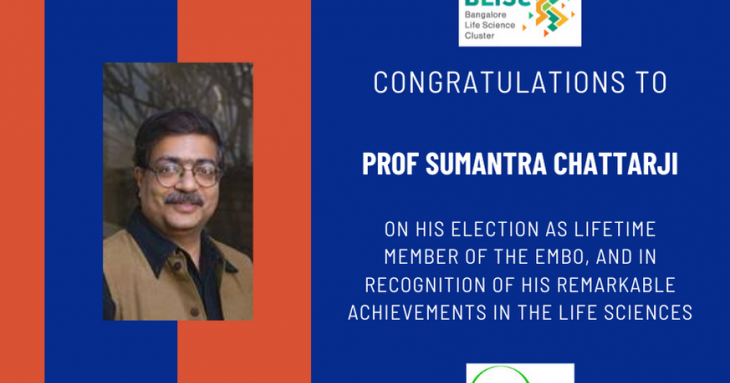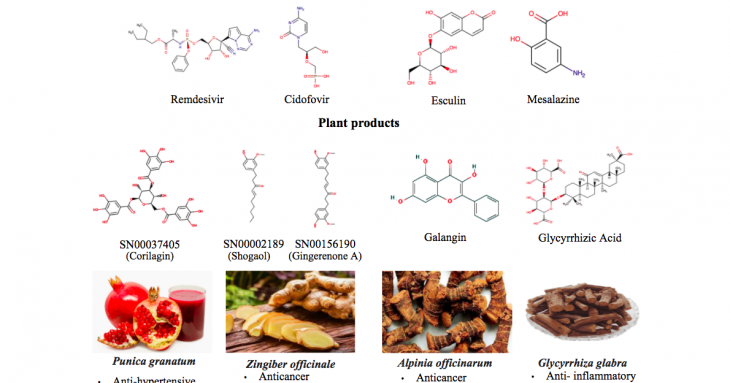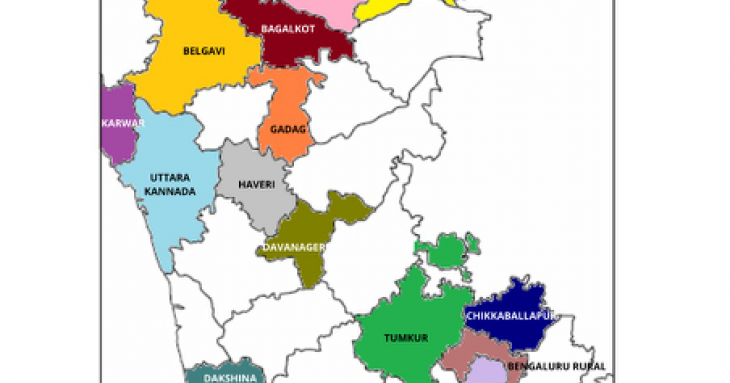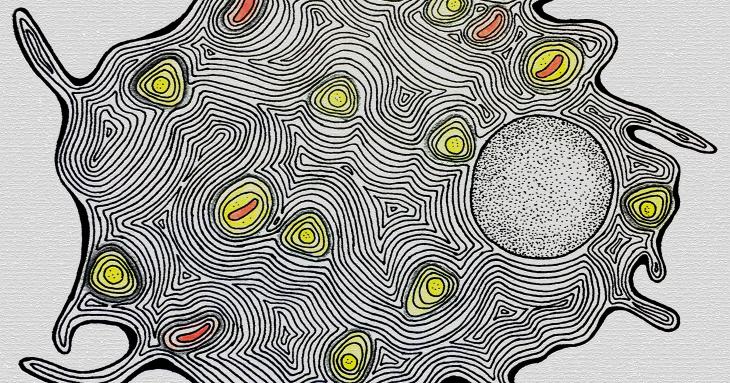-
NCBS welcomes new faculty member: Shaon Chakrabarti
The National Centre for Biological Sciences is delighted to welcome Shaon Chakrabarti, who joins the Centre as its newest faculty member.
Shaon’s research combines theory and experiments to study cellular proliferation at the single cell level -- its underlying physical principles, control mechanisms, and consequences in development and disease. The eventual goal of his research is to build on these basic principles to improve therapeutic strategies in the clinical treatment of cancer. -
Professor Sumantra Chattarji elected a lifetime member of the EMBO
The BLiSC community congratulates Prof. Sumantra Chattarji on his election as a lifetime member of the EMBO in recognition of his remarkable achievements in the life sciences.
-
Needle in a haystack: Computational search narrows down COVID-19 cure possibilities
Along with the those on the frontlines, thousands of researchers around the world are working to identify the right approach to tackling the COVID-19 pandemic from various angles and disciplines. The search for effective treatment options and vaccinations for the SARS-CoV-2 has occupied scientists and medical researchers in recent months in an unprecedented manner.
-
Researchers identify 33 molecules that can target 1 COVID-19 protein
Researchers at the Bengaluru-based National Centre for Biological Sciences (NCBS) have identified 33 small molecules out of 3, 30,000 that can target one protein — NSP1 — in the Sars-Cov-2 virus, which causes Covid-19. Identifying these molecules may help with drug discovery and examining existing drugs, approved by the Food and Drug Administration (FDA), that can be repurposed to treat Covid-19.
-
STRANGE BEDFELLOWS: HOW BUTTERFLY CATERPILLARS SUSTAIN THEIR ASSOCIATION WITH COCKTAIL ANTS
Advanced X-ray MicroCT technology offers unparalleled insights into the functional morphology of specialized organs that mediate interactions between butterfly caterpillars and their ant hosts
-
Behind the scenes of the BLiSC testing effort: About our contributors
The COVID-19 pandemic is upon us! The nation has been through prolonged lockdowns, yet the rising case numbers have kept up the relentless demand on testing.
-
Tuberculosis: A mutiny against mycobacteria
Tuberculosis (TB), popularly known as the White Plague, is one of the world’s deadliest infections. ‘Consuming’ millions of lives, the disease owes its success to the fervent microbe, Mycobacterium tuberculosis (Mtb) that has been using every trick under its sleeve to outwit the host. Consequently, an understanding of host-microbe interactions has been of paramount importance to combat TB.
Dr. Varadharajan Sundaramurthy and his team of researchers from the National Centre for Biological Sciences have been making significant progress in this front.
-
A damselfly’s colours have more to them than adding to the looks
In the study, published in the journal Ecological Entomology, Shantanu Joshi and Dr.
-
NCBS Archives tells stories of how science blossomed here
Letters, photographs, old instruments and notebooks are among 50,000 objects at the Archives.December 4, 1987: In just about legible cursive handwriting, Nobel Prize winner Francis Crick writes a letter to Obaid Siddiqi, professor at Tata Institute of Fundamental Research, apologising for failing to come and meet him in Mumbai. Now the letter lies carefully placed in a paper file, inside a small cardboard box, in a steel locker at the Archives of the National Centre for Biological Sciences (NCBS), Bengaluru.


